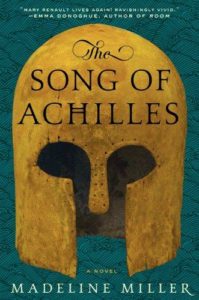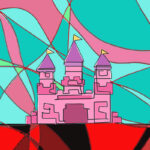On the Historical Fiction That Lives in the Space Between History and Myth
Phong Nguyen Recommends Books by Naguib Mahfouz, C Pam Zhang, and More
Let me begin with this admission: every work of historical fiction lives somewhere between history and myth. Before one reckons with the realities of what the research reveals, one must contend with all the layers of subsequent representation of whatever historical moment they approach. Even the most recent historical events are informed by myth. Even when you strip away the layers of propaganda and deliberate distortion, there are persuasive narratives underneath it that color our experience of every key moment in history.
But there are some books that honor the mythic dimension of history on a different level. These books conjure the myth, sometimes with the intention of exorcizing it; and the result is often a synthesis: a new relationship to the written history that is not unquestioned acceptance of the myth but neither is it a total supplanting of the myth. To quote Thuy Dinh in a recent review of Bronze Drum, such books “evoke and subvert” prevailing narratives by engaging with them.
Because myth is useful, not just to nations and the powerful who rule those nations, but to our psyches on an individual and global scale. The reason to integrate history and myth is to approximate a truth that isn’t just “personal” or “universal,” but to tell a story that partakes of both.
Here are seven titles that live halfway between history and myth.
*

Colson Whitehead, The Underground Railroad
Underground Railroad literalizes the metaphor of an underground railroad delivering enslaved people in the antebellum South to the free states. A twisted Epcot in which the tragic and sordid history of America’s treatment of enslaved people is laid bare, it tells more truth with its literary license than whole shelves of historical fiction that tackle the same subject matter in a more literal fashion. Using myth to reveal history, and using history to forge a new myth, Whitehead engages these forces on equal terms.

Michael Chabon, The Amazing Adventures of Kavalier and Clay
Reimagining the origins of the comic book superhero, The Amazing Adventures of Kavalier and Klay draws upon the story of the golem to show how the American mythology of superheroes draws powerfully from Jewish tradition and culture, in which the story of the comic book creators is marbled with the story of the myths themselves. Alternately hyper-real and surreal and unreal, this contemporary classic of a novel does not heed genre boundaries.

Madeline Miller, Song of Achilles
Combining the author’s deep knowledge of both Ancient Greek history and Homer’s The Iliad, Song of Achilles gives texture to a legend that previously felt remote. Conveying the story of Achilles through the down-to-earth perspective of his best friend and lover Patroclus, Miller humanizes the demigod while slyly elevating the virtue of the vulnerable and unsung hero of the tale: Patroclus himself. Reckoning with the myth, in this case, means revealing the role of the taleteller in manifesting the hero’s glory.

Naguib Mahfouz, Akhenaten: Dweller in Truth, tr. Aida Bamia
As the home to one of the oldest civilizations in human history, the very air of Egypt is redolent of myth, and Naguib Mahfouz uses that mythic fog to spin a story of the Pharaoh Akhenaten, also known as Amenhotep IV, sometimes regarded to be the first monotheistic ruler, in the 14th century BCE. The narrator’s curiosity leads him to question what happened in Akhenaten’s ruined city on the Nile, and in doing so, he mirrors the reader’s effort to untangle the myth of Akhenaten from the true history of that place, a task doomed to failure from the start.

C. Pam Zhang, How Much of These Hills is Gold
How Much of These Hills Is Gold, Zhang both interrogates and expands upon the myth of the American West. By focusing on a Chinese American family during the gold rush, it presents us with a template that is both familiar and entirely new. Informed by the history of Chinese immigration but commenting powerfully upon the prevailing myth of the West, How Much of These Hills Is Gold stands at the crossroads looking in all four directions at once: the history itself, and how we view it, as well as the myth as it was, and the myth as it could be.

Toni Morrison, Beloved
Among the greatest of American novels, Morrison’s Beloved is a ghost story that surrounds and inhabits a place. That place is at once known as 124 and as America itself—haunted and trauma-stricken and “spiteful.” Tackling one of the most persistent founding myths of American society—that it is a nation based on the ideals of freedom and independence it espouses—Beloved shows the stark truths of not just antebellum America but postbellum America, and our America, as a conflicted and lumbering, deeply misguided and profoundly hypocritical behemoth.

Salman Rushdie, Midnight’s Children
In honor of the great storyteller who recently survived a horrific attempt on his life, I conclude this list with the work of Salman Rushdie. Midnight’s Children takes the moment of India’s independence from British rule and makes a grand myth out of that seemingly innocuous material. The “midnight’s children” in question are those who were born on or near midnight on August 15, 1947 (75 years ago today, as of this writing) and possess magical powers that allow them, among other things, to hear one another’s thoughts. The fact that the story is told from the point of view of one of these children casts the whole tale into doubt and causes us to litigate what is truth and what is myth.
________________________________

Phong Nguyen’s Bronze Drum is available now via Grand Central Publishing.




















